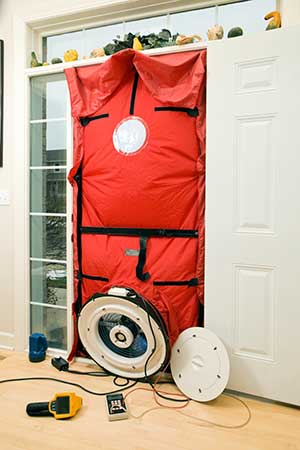As an electrician, you’re in the perfect position to become a home energy expert for your customers. Energy audits and blower door tests are ways you can build a niche service offering in your community.
You know the importance of well-built and maintained homes isn’t only cosmetic or structural—it’s vital to energy efficiency. That’s why you already encourage your customers to use LEDs and lighting controls to cut down on lighting and inadvertently heating a home.
Energy Audits: A Chance for Growth
Providing energy efficiency assistance and products presents an opportunity to expand your business. You could start offering home energy audits to homeowners or even new home builders.
Energy audits can consist of a variety of tests, but the predominate purpose is to find where homeowners can reduce their energy use and save money.
You already have experience looking for these factors in lighting, heating and cooling systems, but if you take energy audits into your list of services, you can encourage your customers to conduct a formal assessment to reduce their monthly energy bills anywhere from 5 to 30 percent, according to the U.S. Department of Energy.
Blower Door Tests: Is the Home Airtight or Leaky?
 Blower door tests are a common way to conduct a home energy audit.
Blower door tests are a common way to conduct a home energy audit.Another factor that should be measured to determine energy efficiency during a home energy audit is how airtight the home is.
Much of a home’s heat escapes through air leaks around doors, windows, vents and attics—the tighter the house, the easier and cheaper it will be to maintain a comfortable temperature.
You can find out how much air is leaking out of a home by using a calibrated or uncalibrated blower door test.
The test is performed by installing a strong fan in the home’s doorway. The fan sucks air out of the house to depressurize it and to intensify the home’s current air leaks. You can then use a smoke pencil in the house to detect the air flowing into the house from small openings, according to the DOE.
For an energy audit, you’ll always want to use a calibrated blower door test so you can measure the air pressure in the home, not merely detect the leaks.
A calibrated blower door tool will come with a pressure gauge to determine the pressure in and out of the house as well as an airflow manometer to measure the airflow moving out of the home.
A blower door test can be performed on any house, old or new. If you’re working with builders, encourage them to have the test performed before they install drywall. If there are any leaks, they’ll be easier to fix then, Green Building Advisor recommends.
If you’re interested in reducing the leakage through your ventilation fans, contact Border States, as we have the products and expertise to minimize unnecessary airflow with quality products.